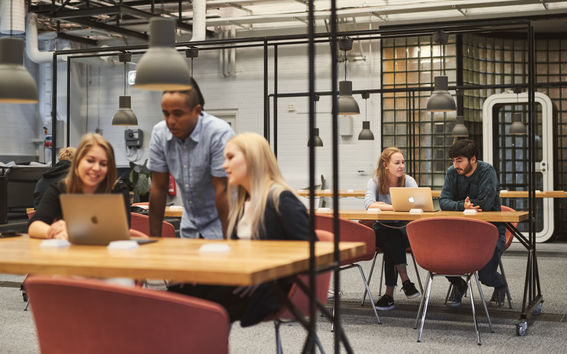Finnish Center for Artificial Intelligence and research groups from Aalto received €1.4M funding from The Future Makers program

The largest individual funding, one million euros, went to FCAI Finnish Center for Artificial Intelligence. FCAI is building a nation-wide competence center that brings together the top artificial intelligence research across fields in Finland. The center has been initiated by Aalto University, University of Helsinki, and VTT Technical Research Centre of Finland.
With the funding, FCAI will build an AI software toolbox to enable companies to have a smoother transition into using artificial intelligence methods. Even though AI has been talked about the world over for quite some time now, it’s full potential still remains largely untapped. The development of new solutions is slowed down by a lack of top experts, of which there’s already a fierce global competition.
‘We are designing software tools with which companies can develop the AI solutions they need—instead of building AI-assisted software tools from scratch. This means you can apply AI without having extensive in-depth knowledge of AI. Our overall goal is to enable the Finnish technology industry to retain control over the core AI technology they use,’ says Samuel Kaski, Academy Professor at Aalto University.
The teams of Aalto University Professors Katja Hölttä-Otto and Mikko Sams received a 200.000-euro funding for their research on making empathy part of technology development. Their goal is to increase designers’ understanding of the needs and behavior of end-users so that the finished products or services meet actual needs.
Lappeenranta University of Technology and Aalto University will jointly a run a group led by Professor Aki Mikkola and Aalto University Professor Perttu Hämäläinen that will fashion a new way to control machinery with a combination of AI and high-performance computing. The machinery would then be able to comprehend the causality behind different kinds of motion and operate independently even in dynamic surroundings. The project received 230.000 euros from the foundations.
Further information:
Laura Juvonen
CEO, Technology Industries of Finland Centennial Foundation
tel. +358 40 589 6263
[email protected]
Marja Leskinen
Secretary General, Jane and Aatos Erkko Foundation
tel. +358 40 514 6969
[email protected]
Read more news

Join Unite! Seed Fund Ideathon in Austria
Travel and accommodation are covered for accepted students. Apply by 6 October.
Success of BATCircle2.0 bolsters Finnish leadership in Li-ion battery supply chain
The Aalto-led collaboration between researchers and industry resulted in impressive research outputs
Maintenance break in ACRIS on 30th of September, 2024
Maintenance break in ACRIS on September from 10:00 to 16:00.